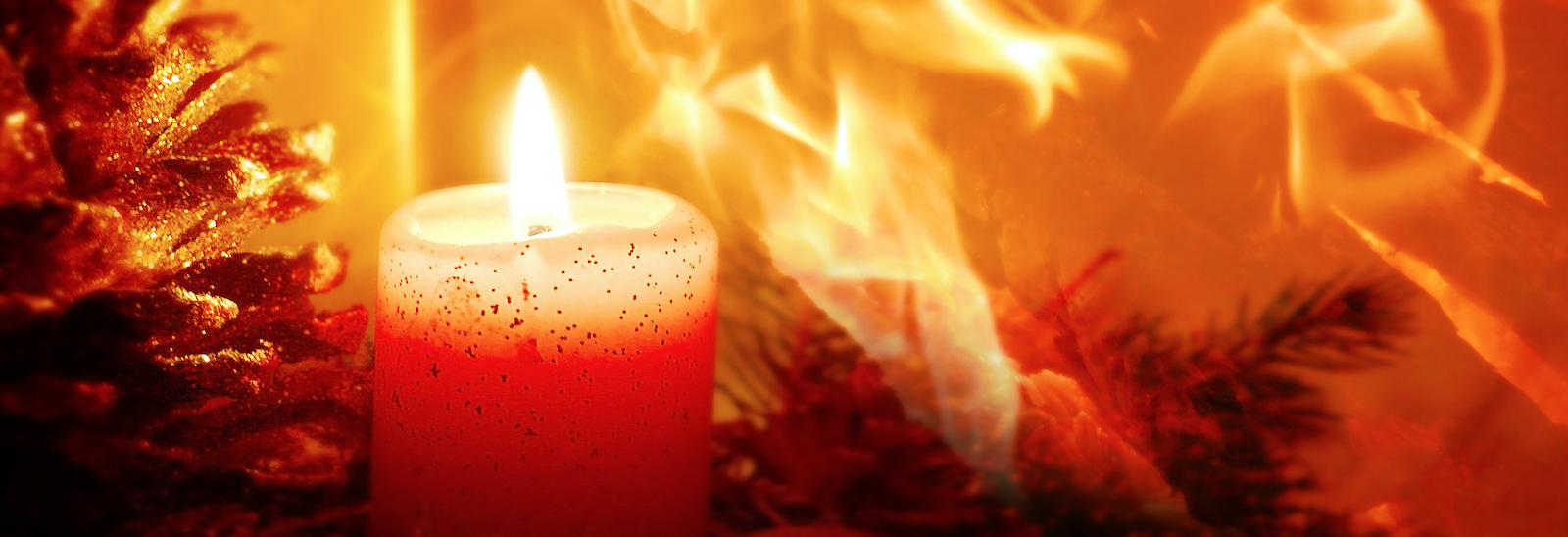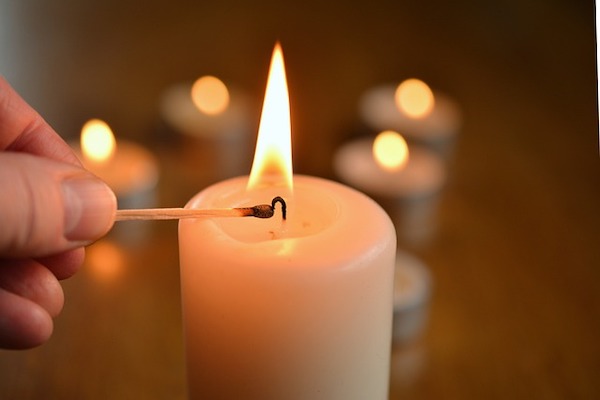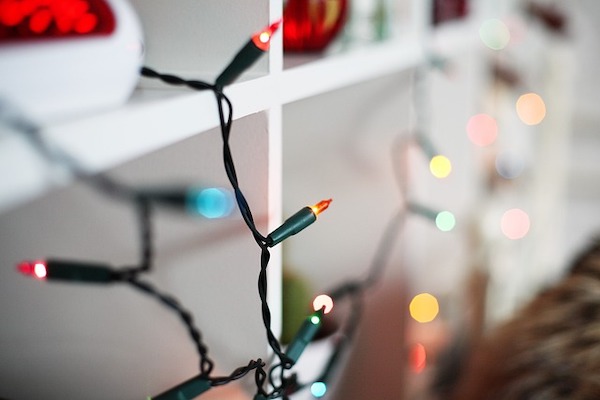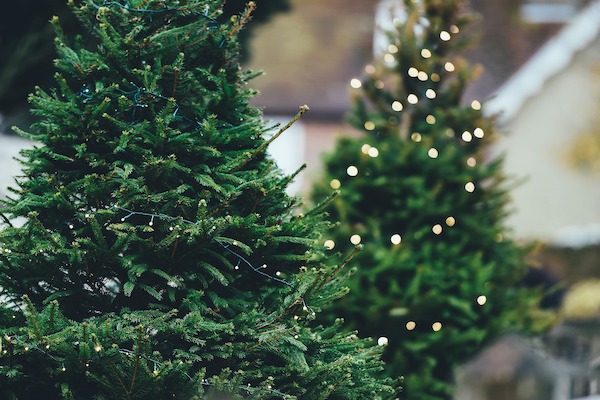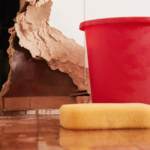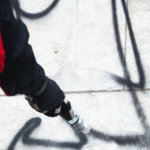Candles are also used often in December in general. They’re an integral part of many holiday customs and traditions. Advent candles are lit on the four Sundays leading up to Christmas. Hanukkah is celebrated with the lighting of the menorah. Kwanzaa uses a seven-branched candleholder (the kinara) to represent the seven principles, such as unity, purpose, and faith.
Beyond religious traditions, candles are also simply used to create ambiance during the holiday season. Maybe it’s a pine-scented candle that puts people in the holiday spirit or a candle-lit centerpiece that makes guests feel honored.
Whatever your reason for integrating candles into your celebration, make sure they’re at least 12 inches away from anything that burns, advises the NFPA.
Decorative lighting
Nearly one-third of home Christmas tree fires are the result of electrical issues. In some instances, people use lights that aren’t intended for a particular application. Other times, light strands are pinched or frayed, leaving the wires exposed and creating a potentially unsafe situation.
Believe it or not, the tradition of hanging lights on a tree used to be even more dangerous. Originally, people used to actually light candles on Christmas trees. It was only done for a few seconds before the candles were blown out. Of course, this led to numerous fires.
As a result, Edward Johnson — friend and partner of infamous light-bulb inventor Thomas Edison — developed a new method for adorning Christmas trees with lights in 1882.
Why not replace the candles with colored electric lights?
He started with eight bulky red, white and blue bulbs on a single wire. They were placed on a tree, much to the awe of the media and spectators.
However, they were too expensive at the time for the average family to afford. An early set of eight bulbs would have cost someone a week’s pay (roughly $80 in today’s dollars), reported Time magazine.
Decades later, General Electric developed pre-assembled lights, which could be produced faster and, therefore, cost less.
Thankfully, people today typically use electric lights and not candles to decorate their trees. To avoid Christmas tree fires from decorative lights, only use lighting evaluated by a nationally recognized laboratory, such as Underwriters Laboratories (UL), recommends the U.S. Fire Administration.
Additionally, read the manufacturer’s instructions carefully and only use lighting approved for your specific use. Also, check to see how many strands can safely be connected at one time.
Before decorating your tree with lights, make sure each light is securely in place, the strand is intact, and no wires are exposed. Designate one person as the “light un-plugger” so there’s no question about who is unplugging the lights each night.
Christmas trees
Every year, U.S. fire departments respond to roughly 210 Christmas tree fires.
Infrequent as they are, these events can be expensive — and even deadly. In fact, home Christmas tree fires cause an average of 6 civilian deaths, 16 civilian injuries and $16.2 million in property damage annually, according to the National Institute of Standards and Technology’s (NIST) National Fire Research Laboratory. One of the biggest holiday fire hazards is a dry Christmas tree.
To underscore the importance of watering a Christmas tree, NIST did a fire safety demonstration to show the speed at which a dry tree will catch on fire and spread compared to a watered tree. Within seconds, the dry tree is engulfed in flames — and the fire starts to spread through the room.
Comparatively, the watered tree showed signs of smoke for some time, and the fire appeared to be containable. This gives residents a warning sign and a chance to escape before the fire consumes the room.
To help prevent Christmas tree fires:
- Cut natural trees at a 45-degree angle at the base and keep them secured in a stand with water.
- Keep the tree away from any sources of heat, including fireplaces, candles, free-standing heaters, or any other potential fire hazards.
- Water your tree daily.
- When the tree becomes dry or December 30 (whichever comes first), discard it on the curb for trash pick-up.
This helps to ensure Christmas trees bring joy — not property damage — to your home.
Restoring a home with fire damage
If a fire has already occurred, restoring your property back to its previous state isn’t always easy. It takes multiple, expensive steps to fix. According to home service pros and reviews site Angi.com, the average cost of fire restoration damage is $19,271.
Some of the fire damage restoration services you may need to include:
- Smoke damage
- Soot removal
- Furniture deodorizing
- Water damage (if sprinklers or hoses were used to put out the fire)
- Ozone treatment
There are five main types of fires, including kitchen oil fires, electrical fires, ordinary combustible fires, gas fires, and combustible metal fires.
The final restoration cost will depend on the extent of the damage and the size of your property (i.e., the larger your home, the more expensive the repair is likely to be).
Selling a home with fire damage
After evaluating the costs, you may decide to forgo restoration services and sell your fire-damaged home.
Each state has different laws, but sellers are typically required to disclose any damage that impacts the property’s material value. It’s best to be up-front — citing any fire damage in the listing itself.
Depending on the extent of the fire damage, it may hinder your ability to sell your house on the market. If that’s the case, you might consider an alternative option: Selling it “as is” to a reputable homebuying company.
They typically don’t require you to make any repairs to the property in order to sell it. The process also tends to be faster and less tedious than a traditional home sale. Some homebuying companies can fast-track your closing to as little as 10 business days from the receipt of a signed contract.
No matter what you decide to do with your house, the important thing is that everyone is safe — and has the information they need to minimize the risk of a fire occurring again, during the holidays or year-round.
Note: This guide is for informational purposes only. Meridian Trust does not make any guarantees about the sufficiency of the content in or linked to from this blog post or that it is compliant with current law. The content within this blog post is not a substitute for legal advice or legal services. You should not rely on this information for any purpose without consulting a licensed lawyer in your area.
